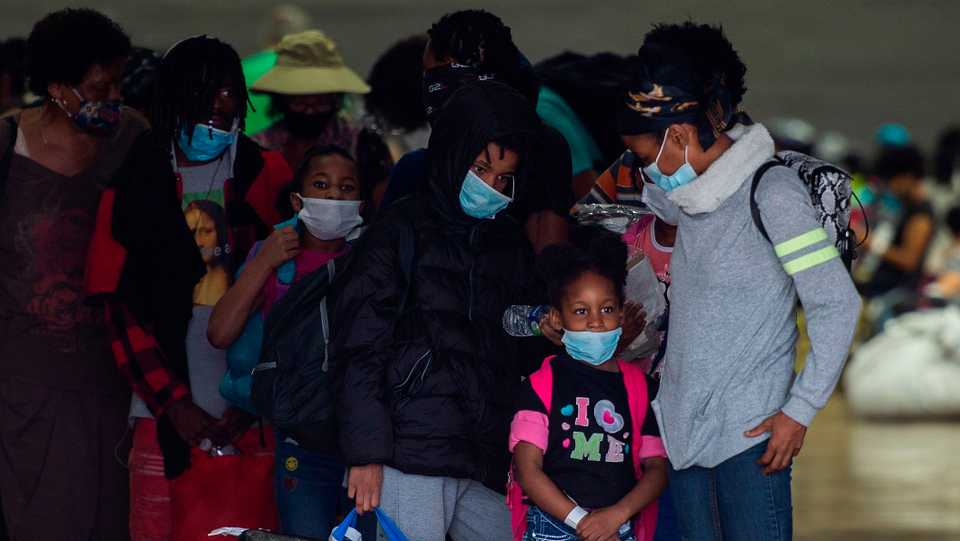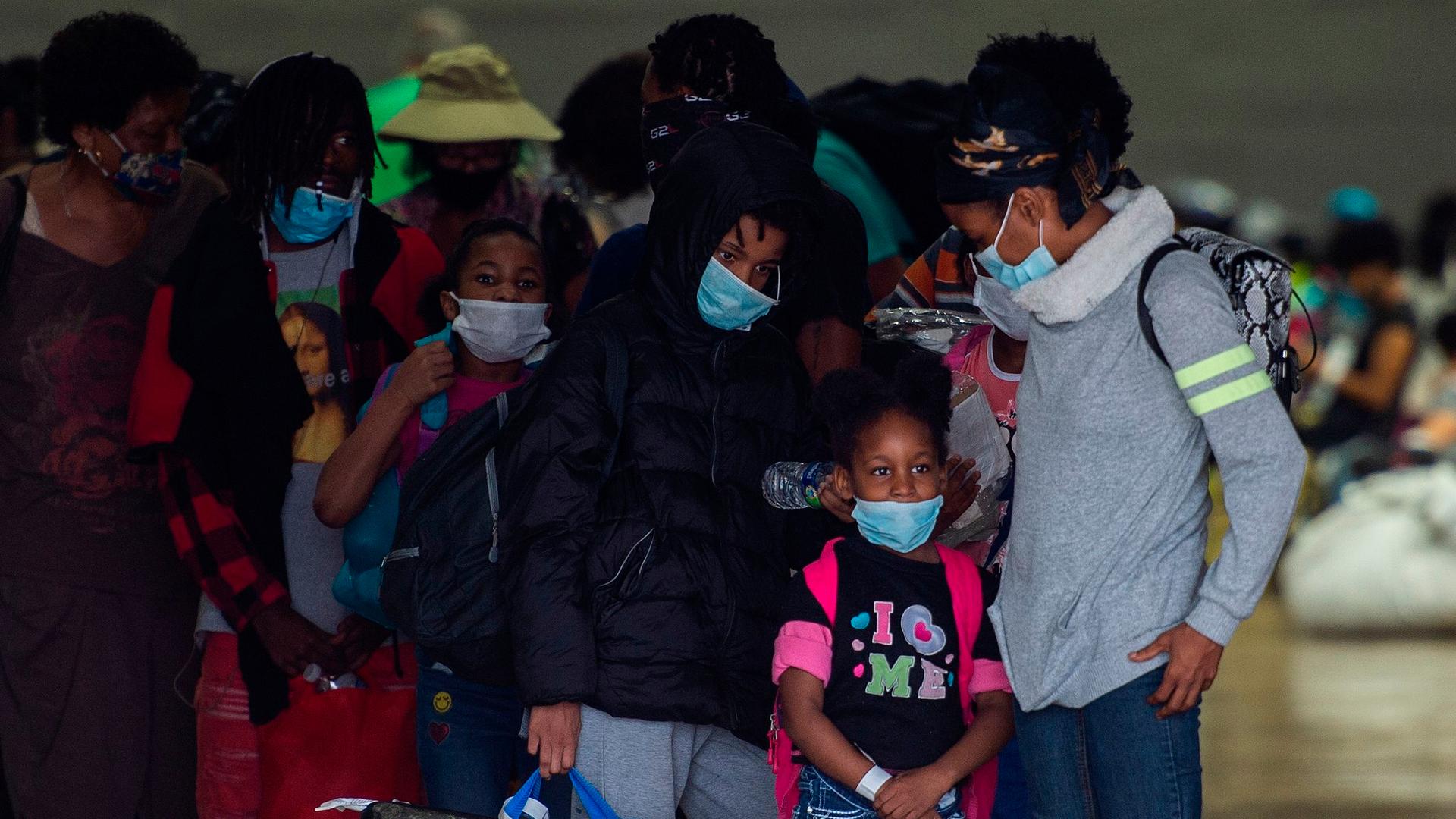
Hurricane Laura is forecast to rapidly power up into a “catastrophic” Category 4 hurricane, even stronger than previously expected, as it churns toward Texas and Louisiana gathering wind and water that swirls over much of the Gulf of Mexico.
Satellite images show that Laura has become “a formidable hurricane” in recent hours, threatening to smash homes and sink entire communities. It has undergone a remarkable intensification, “and there are no signs it will stop soon,” the National Hurricane Center said in a briefing early Wednesday.
Laura’s maximum sustained winds have increased to near 175 kilometres per hour (kph) with higher gusts, forecasters said early on Wednesday.
“We are expecting widespread power outages, trees down. Homes and businesses will be damaged,” said Donald Jones, a National Weather Service meteorologist in Lake Charles, Louisiana, which is near the bullseye of Laura’s forecast track.
“I’m telling you, this is going to be a very serious situation,” Jones said.
A Category 4 hurricane will do catastrophic damage: “Power outages will last weeks to possibly months. Most of the area will be uninhabitable for weeks or months,” the weather service says.
Hurricane #Laura Advisory 25: Laura Continues to Strengthen. Expected to Be a Major Hurricane At Landfall Along The Northwestern Gulf of Mexico Coast. https://t.co/VqHn0u1vgc
— National Hurricane Center (@NHC_Atlantic) August 26, 2020
Evacuation orders
In the largest US evacuation of the pandemic, more than half a million people were ordered on Tuesday to flee from an area of the Gulf Coast along the Texas-Louisiana state line.
More than 385,000 residents were told to flee the Texas cities of Beaumont, Galveston and Port Arthur, and another 200,000 were ordered to leave low-lying Calcasieu Parish in southwestern Louisiana, where forecasters said as much as 4 meters of storm surge topped by waves could submerge whole communities.
The situation could be even worse in Cameron Parish, which could soon be under water.
“Cameron parish is going to be part of the Gulf of Mexico for a couple of days based on this forecast track,” Jones said.
In Galveston and Port Arthur, Texas, mandatory evacuation orders went into effect shortly before daybreak on Tuesday. “If you decide to stay, you’re staying on your own,” Port Arthur Mayor Thurman Bartie said.
Forecasters expect the storm to increase to 193 kph before landfall and push ocean water onto land along more than 724 km of coast from Texas to Mississippi. Hurricane warnings were issued from San Luis Pass, Texas, to Intracoastal City, Louisiana, and storm surge warnings from the Port Arthur, Texas, flood protection system to the mouth of the Mississippi River.
Fearing that people would not evacuate in time, Louisiana Governor John Bel Edwards said those in southwest Louisiana need to reach wherever they intend to ride out the storm by noon Wednesday, when the state will start feeling the storm’s effects.
Louisiana must take Hurricane Laura seriously. Make sure your plans are in place, that you have what you need and that you evacuate if you need to before it’s too late. #lagov #Laura #HurricaneLaura #Lawx pic.twitter.com/jUoAd3D3mw
— John Bel Edwards (@LouisianaGov) August 26, 2020
Fear of contracting virus
Officials urged people to stay with relatives or in hotel rooms to avoid spreading the virus that causes Covid-19. Buses were stocked with protective equipment and disinfectant, and they would carry fewer passengers to keep people apart, Texas officials said.
Whitney Frazier, 29, of Beaumont spent Tuesday morning trying to get transportation to a high school where she could board a bus to leave the area.
“Especially with everything with coronavirus going on already on top of a mandatory evacuation, it’s very stressful,” Frazier said.
Shelters opened with cots set farther apart to curb coronavirus infections. People planning to enter shelters were told to bring just one bag of personal belongings each, and a mask to reduce the spread of coronavirus.
“Hopefully it’s not that threatening to people, to lives, because people are hesitant to go anywhere due to the pandemic,” Robert Duffy said as he placed sandbags around his home in Morgan City, Louisiana. “Nobody wants to sleep on a gym floor with 200 other people. It’s kind of hard to do social distancing.”
As #TropicalStormLaura threatens the TX coast, it is important to heed the warnings and evacuation orders of local officials.
Today is the day to put your plan into action:
✅Listen to Local Officials
— Texas Division of Emergency Management (@TDEM) August 25, 2020
✅Prepare Your Home
✅Pack Your Emergency Go-Kit https://t.co/1JxTcwrnMm https://t.co/Rpw8zUUeva
Threat for energy
The hurricane is threatening a centre of the US energy industry. The government said 84 percent of Gulf oil production and an estimated 61 percent of natural gas production were shut down. Nearly 300 platforms have been evacuated.
While oil prices often spike before a major storm as production slows, consumers are unlikely to see big price changes because the pandemic decimated demand for fuel.
In the Gulf of Mexico, more than 100 oil platforms were evacuated as a precautionary measure, stopping about 80 percent of oil production.
Laura passed Cuba after killing nearly two dozen people on the island of Hispaniola, including 20 in Haiti and three in the Dominican Republic, where it knocked out power and caused intense flooding. The deaths reportedly included a 10-year-old girl whose home was hit by a tree and a mother and young son crushed by a collapsing wall.
Laura’s arrival comes just days before the August 29 anniversary of Hurricane Katrina, which breached the levees in New Orleans, flattened much of the Mississippi coast and killed as many as 1,800 people in 2005.
Less than a month later, Hurricane Rita struck southwest Louisiana as a Category 3 storm.
READ MORE: Potential hurricane threat to US as twin storms approach










Discussion about this post